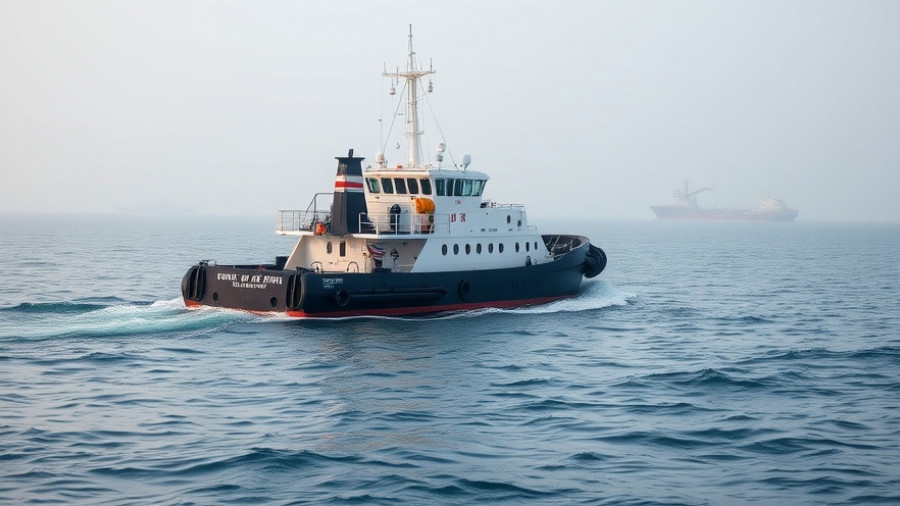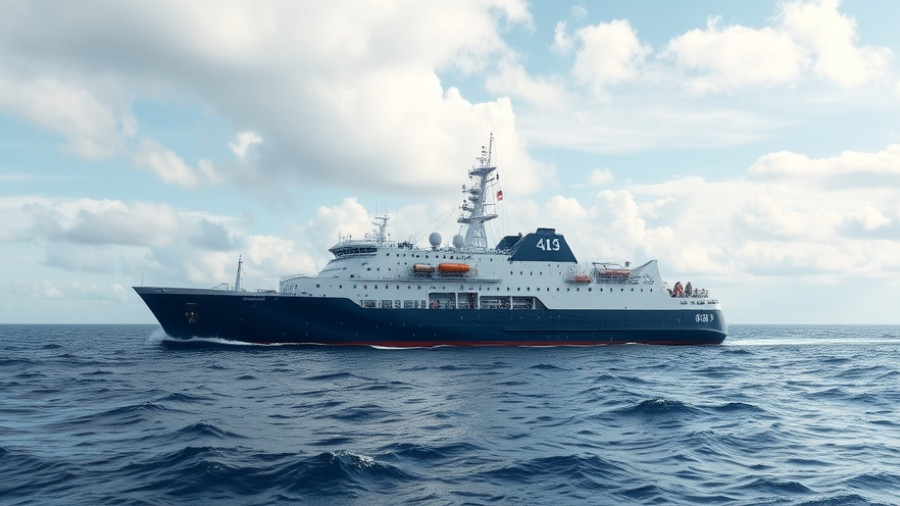
Understanding the Silent Struggles of Arctic Whales
The Arctic's bowhead whales, capable of living over 200 years, have witnessed the transformation of their ocean home. With a world that has only recently introduced screw propellers and diesel engines, the underwater soundscape has drastically changed, thanks to the exponential growth of shipping noise.
The Unique Acoustic Landscape of the Arctic
Unlike other oceans, the Arctic’s natural sound spectrum is significantly more complex and nuanced. Sea ice serves as both a shield and diffuser for underwater sound, causing marine mammals to rely on sounds of ice and their own vocalizations for navigation and communication. Professor Christopher W. Clark from Cornell University notes that even slight changes in their sound environment can impact species like belugas and narwhals, who navigate using these natural acoustic signals.
A Surge in Noise Pollution: The Data Speaks
The Protection of the Arctic Marine Environment Working Group (PAME) has been researching underwater noise for years, and your data does not paint a rosy picture. Between 2013 and 2019, noise levels doubled in some areas of the Arctic Ocean. Continued maritime activities, especially with the massive size of cruise ships, threaten to exacerbate this issue.
PAME’s projections indicate that without immediate policy intervention, underwater noise could significantly rise by 2030, particularly around regions like Baffin Bay and the Chukchi Sea. It's a pressing concern that demands our attention, as escalating noise levels might not only displace marine wildlife but could also alter their fundamental behaviors.
Potential Solutions: Reducing the Harm
Mitigating underwater noise is a complicated puzzle that involves numerous strategies. Slowing ships down has been suggested as a potential tactic, although many vessels already operate at reduced speeds. Redirecting routes away from crucial migration pathways for whales could help, but simply shifting noise may not solve the problem entirely.
One promising solution lies in retrofitting ships with quieter propellers and adhering to more stringent hull cleaning protocols, as recommended by the International Maritime Organization (IMO). Nonetheless, Dr. Melanie Lancaster from WWF's Global Arctic Programme emphasizes that the Arctic's unique environment requires tailored guidance to ensure the effectiveness of these measures.
The Call to Action: A Chance to Preserve
As Dr. Lancaster insightfully points out, the Arctic offers us a rare opportunity: to take proactive steps in protecting its marine ecosystem before it becomes irreversibly damaged. We are at a crucial nexus, where decisions made today can either preserve this relatively unpolluted ocean or lead us down a route of degradation seen in other parts of the world.
Looking Ahead: Planning for a Quieter Future
The time is ripe for comprehensive policies that not only acknowledge but will actively work towards reducing noise pollution in the Arctic. International collaboration, innovative research, and unwavering commitment to prevent more harm are key to maintaining the natural soundscape that is essential for the survival of these ancient marine mammals. Let's seize this moment and ensure that future generations will hear the songs of the bowhead whales echoing through the Arctic waters for years to come.
 Add Row
Add Row  Add
Add 




Write A Comment